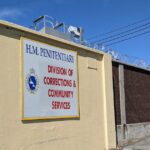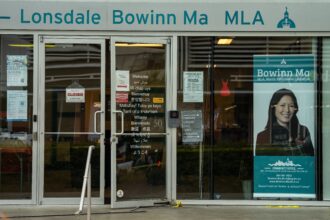In a sweeping operation that has sent shockwaves through Ontario’s criminal underworld, provincial law enforcement has dismantled what investigators describe as a “sophisticated drug trafficking network” operating across multiple regions. The six-month investigation culminated in the arrest of 25 individuals facing nearly 200 combined charges, marking one of the most significant drug enforcement actions in the province this year.
The operation, codenamed “Project Intercept,” targeted high-level distributors allegedly responsible for flooding communities with illicit narcotics including fentanyl, cocaine, and methamphetamine. According to Ontario Provincial Police Commissioner Thomas Reid, the network had established distribution channels stretching from Toronto to remote northern communities.
“What we’ve witnessed is the systematic dismantling of an organization that deliberately targeted vulnerable populations with deadly substances,” Reid stated during yesterday’s press conference. “The individuals arrested weren’t street-level dealers but rather key players who controlled significant portions of the provincial drug trade.”
Authorities seized contraband valued at approximately $3.2 million, including over 12 kilograms of fentanyl—enough to cause thousands of potential overdoses. The operation also recovered 18 illegal firearms, $420,000 in cash, and numerous vehicles allegedly used in distribution activities.
Ontario’s Minister of Public Safety Jennifer Morris praised the collaborative effort between provincial, municipal, and federal agencies. “This investigation demonstrates what’s possible when our various law enforcement bodies share intelligence and resources toward a common goal,” Morris explained. “Each seizure represents lives potentially saved.”
The investigation revealed concerning trends in how modern drug networks operate. Detective Superintendent Alicia Fernandez, who led the operation, highlighted the organization’s use of sophisticated counter-surveillance techniques and encrypted communication platforms.
“What distinguished this particular network was their operational discipline,” Fernandez noted. “They employed technology typically associated with state-level espionage, maintained strict hierarchical structures, and compartmentalized knowledge among members—all hallmarks of an operation designed for longevity.”
Health officials have expressed cautious optimism that the disruption might temporarily reduce the flow of dangerous opioids into communities already battling addiction crises. Dr. Michael Sanderson, an addiction medicine specialist at Toronto General Hospital, emphasized the broader implications.
“While enforcement actions create immediate disruptions in supply chains, they must be paired with expanded treatment resources,” Sanderson told CO24. “The 48-72 hours following major busts often see individuals in active addiction facing dangerous withdrawal scenarios or seeking substances from unfamiliar sources, potentially increasing overdose risks.”
Community advocates have called for the redirection of some asset forfeiture proceeds toward harm reduction programs. Sarah Williams, executive director of the Ontario Harm Reduction Network, argued that “enforcement alone cannot address the underlying drivers of addiction. The millions spent on this investigation, while necessary, must be matched with equivalent investments in prevention and treatment.”
The suspects, ranging in age from 22 to 58, face charges including trafficking in controlled substances, possession for the purpose of trafficking, conspiracy, weapons offenses, and participation in criminal organization activities. Several defendants have known connections to established crime groups, according to police sources.
Legal experts anticipate lengthy court proceedings. Criminal defense attorney Marcus Donovan, who isn’t involved in the case, explained that “prosecutions involving multiple defendants and complex conspiracy allegations typically encounter significant procedural challenges. The Crown must establish not just possession, but knowledge, intent, and coordination among parties.”
As communities across Ontario continue grappling with addiction-related challenges exacerbated by the pandemic and housing crisis, this enforcement action represents a significant but incomplete response to a multifaceted problem. The question remains: can we develop an approach to substance use that balances necessary enforcement with the public health interventions required to prevent the next generation of traffickers from simply filling the vacuum left behind?


















